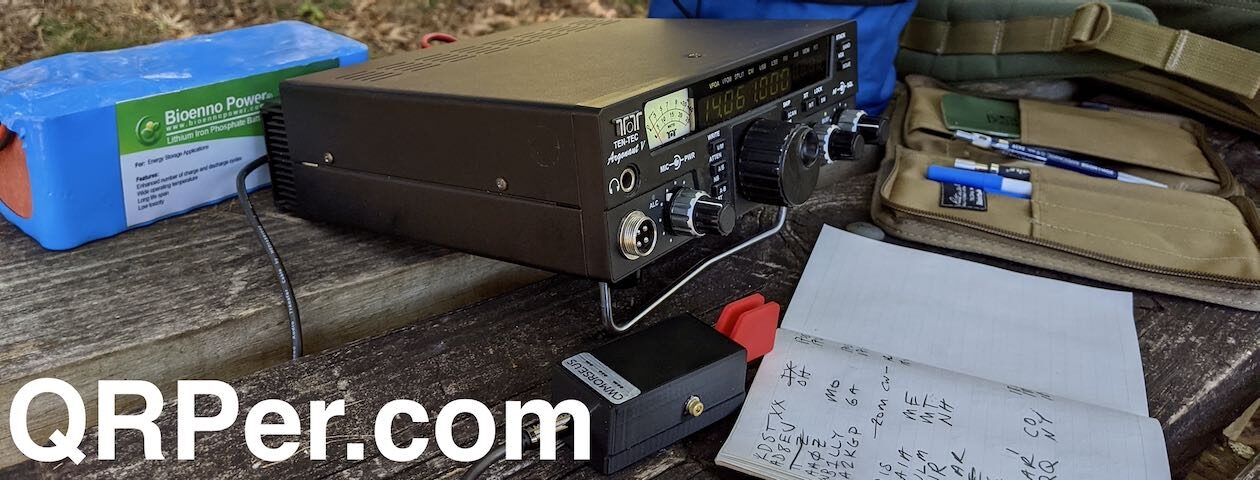Each year, I attempt to post a few of the Black Friday and Cyber Monday deals readers send me and that I also discover online.
It seems, each year, the sales come earlier and earlier. This year, many of the promotions started nearly a full week before “Black Friday.”
The following are a few of the deals out there I felt worth noting and that readers have shared with me. If more tips roll in, I might post updates over the coming days (if time allows during the Thanksgiving holiday).
Here’s what I have so far…
Note: All Amazon and Radioddity links are affiliate links that support QRPer.com at no cost to you.
Anker Soundcore Mini Speaker, Renewed ($17.99)
I love this Soundcore Mini speaker and use it with my radios that either lack an internal speaker or have a small internal speakers. Mike was the first person to review it here on QRPer. Amazon has this “renewed” (in other words, refurbished) Soundcore Mini on sale for $17.99. Not a bad price and I’ve very tempted to buy a second.
Xiegu G106 QRP Transceiver ($239.79)
Check out my review of the G106 before considering this purchase. If you’re looking for a very basic field radio that covers 80-10 meters in multiple modes (CW, SSB, AM, FM), the G106 might fit the bill. Again, read my in-depth review before making a decision. The Black Friday price on Amazon is $239.79 and, at time of posting, there were five left in inventory at this price.
Xiegu X6100 ($549)
Check out my X6100 review here. At time of posting, Amazon has one Xiegu X6100 for $549. This isn’t technically a Black Friday sale price, but it’s the lowest I’ve seen the X6100. Again, it appears they only have one left in inventory, however. Click here to check it out.
Elecraft Black Friday
Elecraft is offering $200 off of the K4D and up to $200 off of their amplifiers. I doubt these appeal to QRPers, but I thought it worth mentioning. As QRP as I am, I’d love for Santa to bring me a K4D! He can leave the amplifiers at the North Pole, though. 🙂
Radioddity Black Friday Deals
Each year, Radioddity puts a lot of their product offerings in their Black Friday sale. This year is no exception. Click here to check them out.
OSMO Action 3 Camera Combos ($279-$369)
Yesterday, I purchased this OSMO Action 3 “Adventure” combo. I’ve thoroughly enjoyed using my original OSMO Action camera over the past three years, so I decided it was time to upgrade to one of the later models. OSMO has several package deals in the Black Friday sale. I look forward to using the new camera to film my activation videos!
Gear Aid HEROCLIP Carabiner Gear Clip and Hook, Large ($20.91)
A friend recommended the Heroclip a long time ago and, while I don’t use it a lot for radio work, it travels in all of my backpacks. I use it while camping to hang backpacks and lanterns. It’s just a handy, compact carabiner and hook. Amazon’s price is $20.92 for the large back clip.
The Big US Ham Radio Retailers
Some of these retailers appear to have their Black Friday specials running already while others are doing pre-BF specials. If you’re in the market for a large ticket item, you might check in with these retailers over the next week:
Canadian Retailers
Update: Many thanks to Thomas Cort who writes:
For your Canadian shoppers…
Radio World has some Black Friday deals:
https://www.radioworld.ca/black-friday-amateur-radio
GPS Central Black Friday deals come out tomorrow:
https://www.gpscentral.ca/
Chameleon Antennas
Update: Chameleon Antennas is offering 25% off with coupon code BLACKFRIDAY25! Many thanks to John for the tip!
Any other good deals out there?
If you’ve spotted a good ham radio deal out there, please comment with specifics. I plan to do more of these posts over the next few days if more specials and deals pop up.





























































